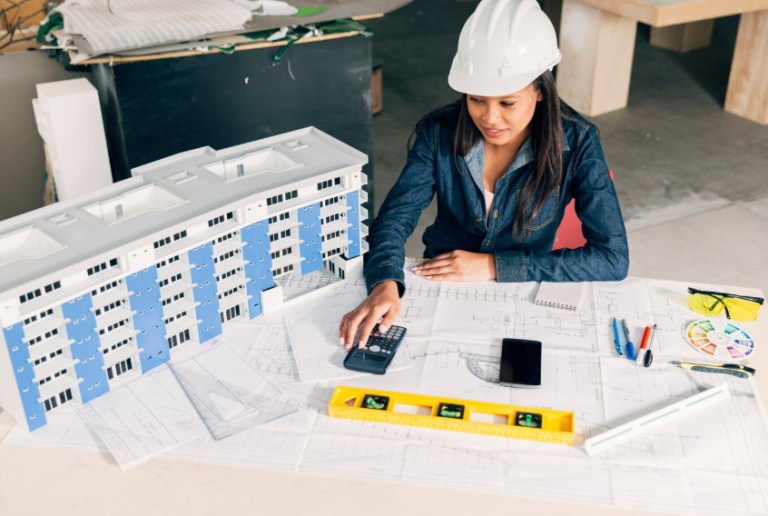Creating accessible multi-floor spaces is essential for modern design, ensuring mobility for everyone while meeting compliance standards. This blog covers structural requirements, practical solutions, and best practices to enhance accessibility in homes and commercial properties.
The Importance of Multi-Floor Accessibility
Multi-floor accessibility is more than meeting regulations; it’s about fostering inclusivity and ensuring that people of all abilities can interact with spaces comfortably. From homes to public buildings, accessible design empowers individuals with mobility challenges, supports aging populations, and creates convenience for everyone—even families with strollers or employees handling equipment.
Here’s why it matters:
- Legal Compliance: ADA (Americans with Disabilities Act) and local building codes require accessible features in public and commercial spaces. Non-compliance can lead to legal issues and fines.
- Enhanced Inclusivity: Accessible spaces foster a welcoming atmosphere for individuals with physical disabilities, making them feel part of the community.
- Future-Proofing: Thoughtful design can adapt to the evolving needs of aging homeowners or residents with changing mobility.
Structural Solutions for Vertical Access
While stairs are a traditional way to connect floors, they may not always cater to everyone’s needs. There are several solutions to make multi-floor access more inclusive and efficient.
1. Elevators
Elevators are the gold standard for multi-floor accessibility in commercial and large residential buildings.
Features to Consider:
- Size: Ensure compliance with ADA standards, providing ample room (usually at least 36”x48”) for individuals using wheelchairs.
- Braille Controls: Include Braille labels and tactile buttons for visually impaired users.
- Automatic Doors: Doors should open and close on a timed basis, allowing smooth entry and exit.
- Emergency Features: Incorporate a clear alarm system, a phone, and backup power.
Modern elevators cater not only to functionality but also to aesthetic inclusion into the building design.
Cost and Installation Notes:
Elevators can be a costly solution, ranging from $25,000 to $50,000 depending on the type and building requirements. However, affordable home elevators like those in Boise ID, offer a more budget-friendly option for homeowners. Their long-term benefits and essential nature in larger buildings make them a worthwhile investment..
2. Stair Lifts
For smaller spaces or private homes, stair lifts provide practical and cost-efficient solutions.
Advantages:
- Installable on straight or curved staircases.
- Easy to use, with seats that transport individuals up or down stairs at the press of a button.
- Budget-friendly compared to elevators.
Upgrades for Comfort:
- Swivel seats for easy access.
- Weight capacity up to 600 lbs for versatile use.
While they may lack the visual appeal of elevators, stair lifts can often be removed or upgraded, making them flexible for evolving needs.
3. Ramps
The simplest, yet highly effective, ramps are ideal for low-rise buildings or individual floors in residential spaces.
Key Guidelines:
- Slope: Follow ADA guidelines with a maximum slope of 1:12 (1 inch rise for every 12 inches of run).
- Handrails: Provide sturdy and continuous handrails to ensure safety.
- Non-Slip Surface: Use materials that minimize slips during wet conditions.
Ramps can also add to the aesthetics of a space when integrated into the exterior landscaping or designed with premium materials.
4. Platform Lifts
Similar to elevators, platform lifts are smaller and are typically designed for short vertical distances. They are an efficient and cost-effective solution for spaces where a traditional elevator is impractical.
Where Platform Lifts Work Best:
- Multi-floor homes.
- Small commercial properties.
- Between mezzanines and lower floors in retail stores.
They require less structural modification compared to elevators but offer remarkable convenience.
Compliance and Legal Requirements
Creating multi-floor access isn’t just good design; it’s a legal requirement in many jurisdictions. Here’s what you need to consider.
ADA Standards
The ADA guidelines require buildings open to the public to provide accessible routes between floors. Some key points include:
- Doorways must have a minimum width of 32 inches.
- Handrails must be present on stairs and ramps to ensure stability.
- Elevators are required where vertical access exceeds certain height thresholds in multi-story buildings.
Fire and Emergency Regulations
Multi-floor designs must also include emergency evacuation plans for those with mobility challenges. This might include accessible fire exits, stairwell seating areas, or evacuation chairs.
Proactively consulting with architects, engineers, and accessibility experts ensures compliance with these regulations.
Integrating Accessible Design in Homes
It’s not just commercial spaces that need multi-floor access. Aging homeowners or individuals with physical disabilities increasingly require thoughtful design for private residences.
Smart Elevators for Homes
Compact home elevator systems, such as vacuum elevators, are being developed to fit more seamlessly into residential settings. They offer easy installation and look modern while requiring minimal space.
Smart-Enabled Stair Lifts
Some lifts integrate smart technology, allowing monitoring through apps and automated assistance during operation.
Future-Forward Thinking
Wider staircases, reinforced floors to accommodate lifts, and pre-installed wiring for future upgrades are excellent investments in new home construction or remodeling projects.
Benefits of Accessible Multi-Floor Design
When done right, accessible multi-floor solutions offer more than improved mobility. They enhance the overall experience for everyone using the space.
Increased Independence
For homeowners aging in place, these features mean they can continue residing in their homes without relying on assistance, preserving their dignity and autonomy.
Adds Property Value
Homes and buildings equipped with accessible multi-floor features often appeal to a broader audience, including families, senior citizens, and individuals of all abilities.
Promotes Inclusive Design
Beyond legal obligations, inclusive design signals that your space values accessibility. This not only benefits mobility-impaired individuals but also establishes your brand or home as progressive, thoughtful, and people-oriented.
Conclusion
Designing multi-floor access is not merely a practical need but an essential investment in creating inclusive, forward-thinking spaces. Whether you’re fitting an elevator into a commercial hub or choosing a stylish stair lift for your home, these structural features improve quality of life for everyone who uses them.


